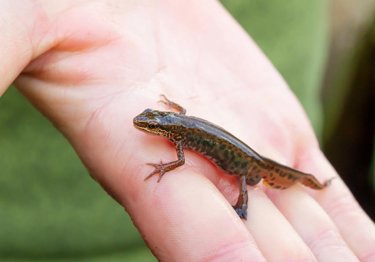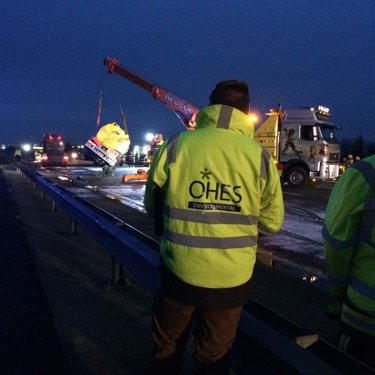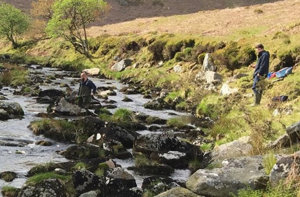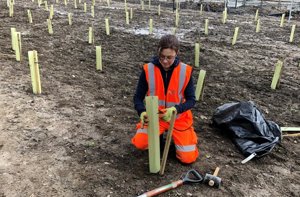
Terrestrial ecology
We help clients to protect terrestrial environments by adhering to regulatory and statutory compliance surrounding the development of land and following an environmental incident.
Anyone looking to develop a piece of land though a planning application into new buildings, housing, or infrastructure such as railways, needs an Ecological Impact Assessment (EcIA) and the various protected species surveys recommended in the Preliminary Ecological Appraisal (PEA) completed to ensure they have minimal impact on nearby terrestrial ecology habitats.
We also provide Pollution Impact Assessments to help clients establish their impact on the terrestrial environment in the event of an incident.
Assessing the status of the ecology in terrestrial habitats is essential in understanding the response of ecological systems to various activities.
Features and outputs
- Terrestrial ecology support with planning and development processes including Ecological Impact Assessment (EcIA).
- Licenced by Natural England to conduct Protected Species Surveys.
- An understanding of all terrestrial invasive species or ‘species of concern’.
- Support with biodiversity net-gain in development.
Legislation
Our ecologists are well versed in key legislation to ensure you remain compliant.
Relevant legislation includes:
Our terrestrial ecologists assess a wide range of ecological indicators such as habitats, protected species, and invasive non-native plant species (INNPS). We provide an integrated approach, linking the terrestrial ecology to habitat availability.
Our services include:
- Phase 1 Habitat/UK Habitat Surveys and Condition Assessments
- Protected species surveys
- Botanical Surveys (NVC) in wetlands, heathland, woodland, grassland, and coastal habitats
- Site Condition Assessment for SSSIs
- Topographic Survey and Mapping
- Soils Survey
- Green Infrastructure Projects
- BREEAM, Codes for Sustainable Homes and Home Quality Mark Assessments
The planning process
Our specialist terrestrial ecologists assess your sites through a Preliminary Ecological Appraisal (PEA). This ecological walk over of your site records habitats and the potential for habitats to support protected and notable species of wildlife and plants. Following this a report on the potential ecological impact of the planned development with recommendations is issued including information on any protected species surveys conducted. This is called an Ecological Impact Assessment (EcIA).

Protected species surveys
Provided by our team of licensed ecologists, the main species we are looking for in our protected species surveys include great crested newts, hazel dormice, bats, otters, water voles, reptiles, nesting birds, and badgers. Surveys take place throughout the calendar year and depend on certain factors, so commissioning appropriate surveys at an early stage of development can save you time and money.
Hedgerow surveys
Hedgerows are protected under the Hedgerows Regulation 1997.
We survey a 30-metre section of hedgerow to identify the main species of ecological and archaeological importance.
National vegetation classification
This detailed floristic survey measures species density and habitats in a 2-metre square in areas such as calcareous grassland, acid grassland, heathland, mires, rivers, pond, woodland.
Biodiversity net-gain
Biodiversity net-gain (BNG) is an approach to development, and/or land management, that aims to leave the natural environment in a measurably better state than it was beforehand.
The Environment Act 2021 makes it mandatory for any new development to deliver a 10% net gain on the biodiversity of its aquatic and terrestrial environments.
Our experts will assess your site to understand the current condition, giving it a score of good, moderate, or poor. We will then provide a plan to secure a net gain to enhance the areas that are not disturbed by development.
Our experts use the UK Hab survey application for smart phones which streamlines both the survey process and Biodiversity Net Gain Assessments by allowing accurate mapping of habitat features and automatically calculating Habitat Condition Scores directly in the field.
Invasive species
The presence of non-native invasive plants, such as Japanese knotweed (Fallopia Japonica), have the potential to cause major impacts on the development of land through costly delay and remediation. They also impact on our native environment by outcompeting our native plant species. Their presence can have serious financial implications on the sale or development of land and property, and can cause a significant financial burden to projects and the environment if their presence is not identified at the earliest stages.
We deliver a professional service for the management of invasive plant species across the UK. We have managed invasive plant eradication and control projects for both the public and private sector, enabling the progression of our clients’ development projects and conservation objectives.
We have a skilled team of qualified consultants who can deal with any issue with nuisance plants. We use our expertise to identify the most appropriate and practical methods of plant control available, adopting the latest proven techniques in biological, mechanical, environmental, and chemical control, whilst meeting all current regulatory requirements.
Our services include:
- Eradication and Control of Invasive Plants
- Bespoke Eradication and Management Plans
- Surveys for Invasive and Non-Native Species
- Catchment Level Evaluation for Invasive Plant Species
- GIS Density and Catchment Mapping
- Environmental Due Diligence
- Contaminated Land Management
- Aquatic Habitat Management
Responding to environmental incidents
Following an environmental incident, we provide post incident surveys to monitor the impact to habitat for as long as required. We gather evidence on behalf of our clients to demonstrate they are taking the terrestrial ecology seriously.
We can also offer habitat restoration following an environmental incident.
You might also be interested in...
Your environmental risk reduction partner, ensuring the safety of your people, property, reputation and the environment
Our experts are on hand to provide tailored investigation, consultancy, response and remediation services to help you balance commercial objectives and environmental compliance.
Contact our experts




